They could be from Lyon, but it is possible to consider other origins, such as Switzerland.
The chest of drawers that we present served as testimony to the rarity of the model and is illustrated on page 108 of the book ''L'ébénisterie provinciale en France au XVIII° siècle'' Bernard Deloche and Jean-Yves Mornand.
It is a Regency period chest of drawers, curved on the front and on the sides, inlaid with native woods (walnut, ash and burr ash, mulberry, plum, etc.)
The drawers present oval geometric reserves framed in a rectangle broaching on a frieze veneer. They are separated by dark crosspieces of brass fluting.
The side panels are very nicely clad in closed crimp in a quatrefoil.
The top also has a very beautiful marquetry in play with three motifs linked in a network of interlacings formed by darker wood fillets: two walnut quatrefoils placed on either side of a larger quatrefoil; the whole framed by a wide band of mulberry, the hearts, in ash forming the angles.
In its center is a Huguenot cross partially camouflaged by superimposition on a four-pointed star, not to be confused with a compass rose.
A brass strapping maintains the whole.
Added to this magnificent inlaid decoration, a beautiful ornamentation of gilded bronzes (pull handles and lamp base) some of which have a crowned ''R'' on the falls of the pinched uprights,
The frames are in fir as well as the bottom of the drawers.
The rear bottom is fitted with panels and, as for Hache or Couleru, the bottoms of the drawers are fitted with half-rabbets taken from the uprights.
Dimensions
H. 87 cm x W. 140 cm x D. 70 cm
France-Lyon?
Native wood marquetry
Beautiful ornamentation of gilded bronzes
Some at the ''R'' Crowned
Regency period
Chests of drawers, tables, cabinets and ''heart'' mirrors
A significant number of pieces of furniture and mirrors are known to bear on the four corners of the top, the leaf or the frame, a heart-shaped motif whose point is always turned outwards.
Without stopping at the idea that it could be a kind of craftsman's signature, a connection is rather necessary with the Huguenot cross on which we find these hearts which, it is said, served the Reformed to evoke the love of God. These pieces of furniture would be of Protestant origin and the heart would signify union, the point facing outward combat, and dissimulation among other motifs, clandestinity.
These decorative elements in the shape of hearts were already found on certain Dutch or Flemish furniture from the beginning of the 18th century. They can even be found from the end of the 17th century, notably on a table top by Boulle which can be dated approximately from the revocation of the Edict of Nantes (1685).
See : '''L'ébénisterie provinciale en France au XVIII° siècle'' Bernard Deloche and Jean-Yves Mornand.


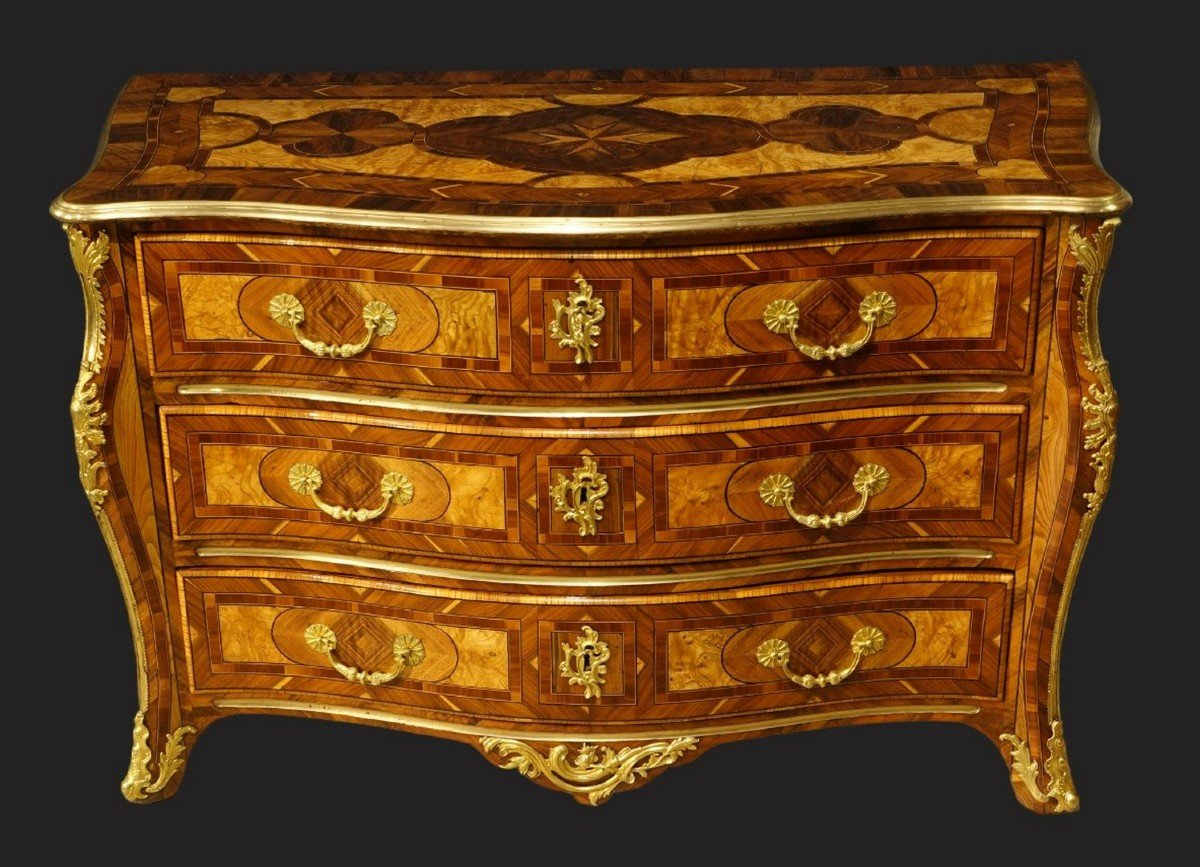



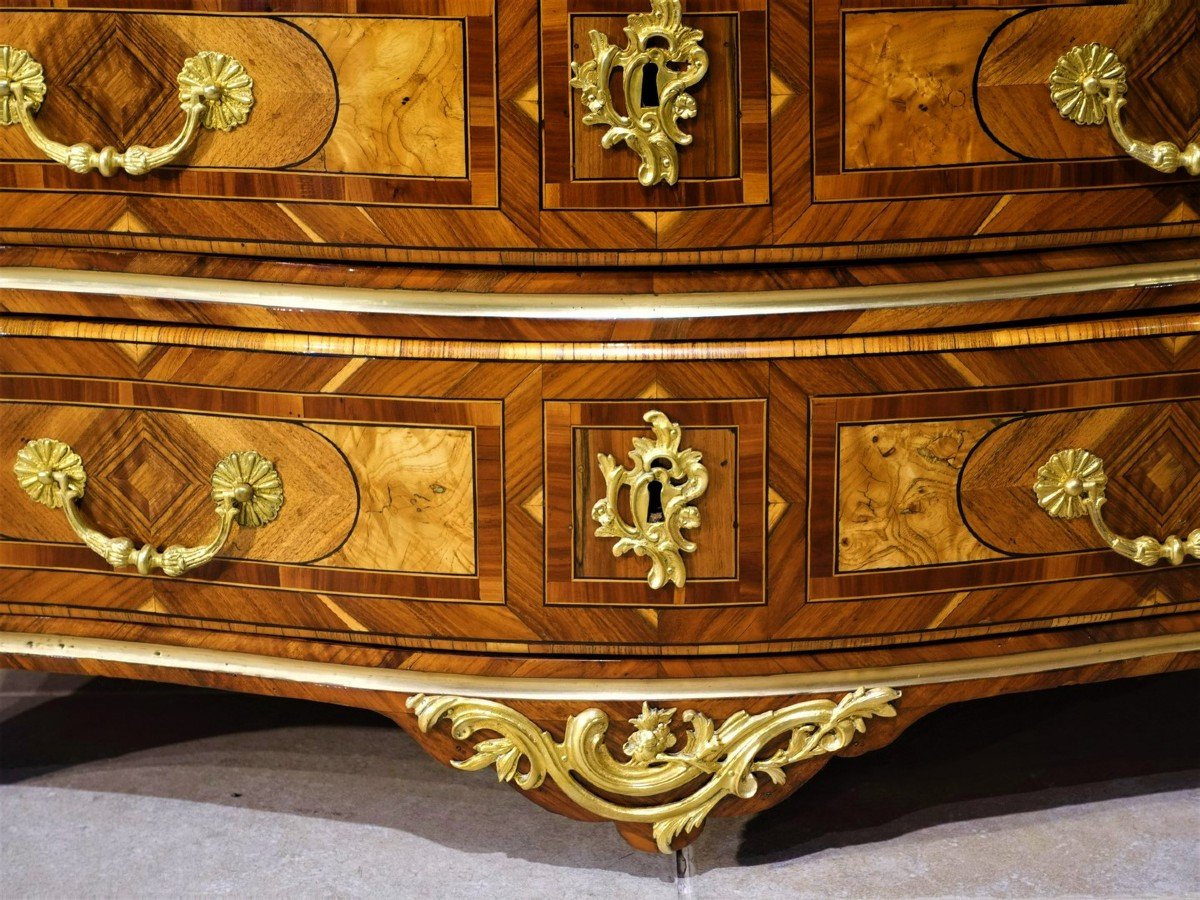
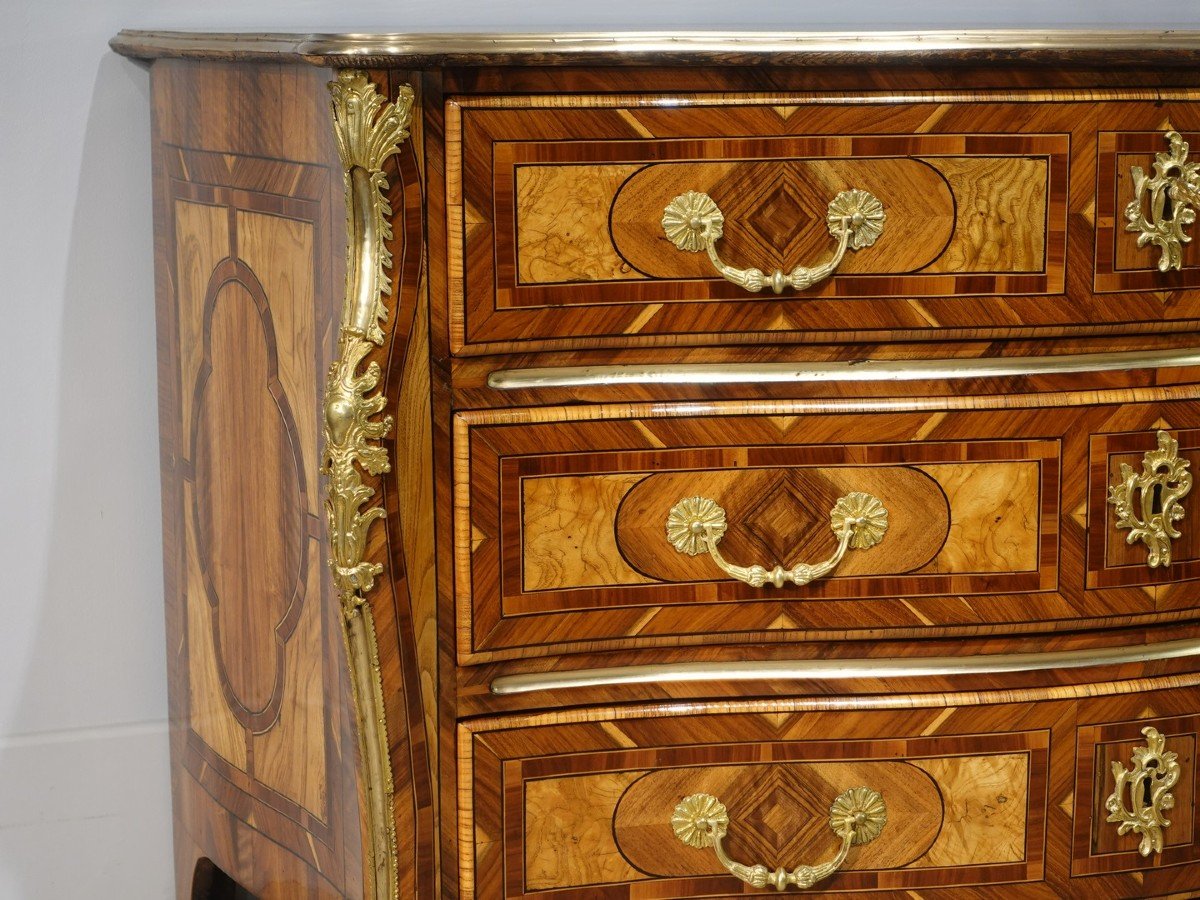
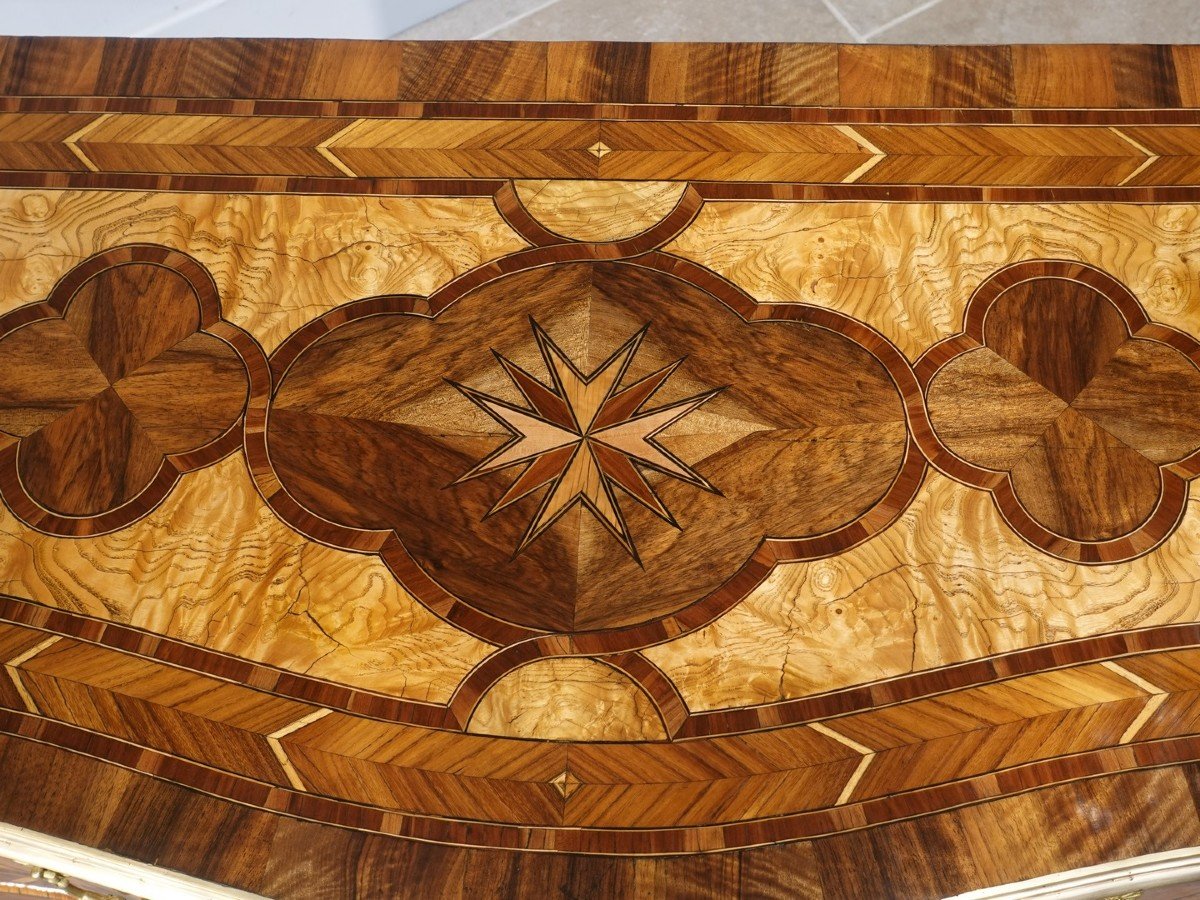
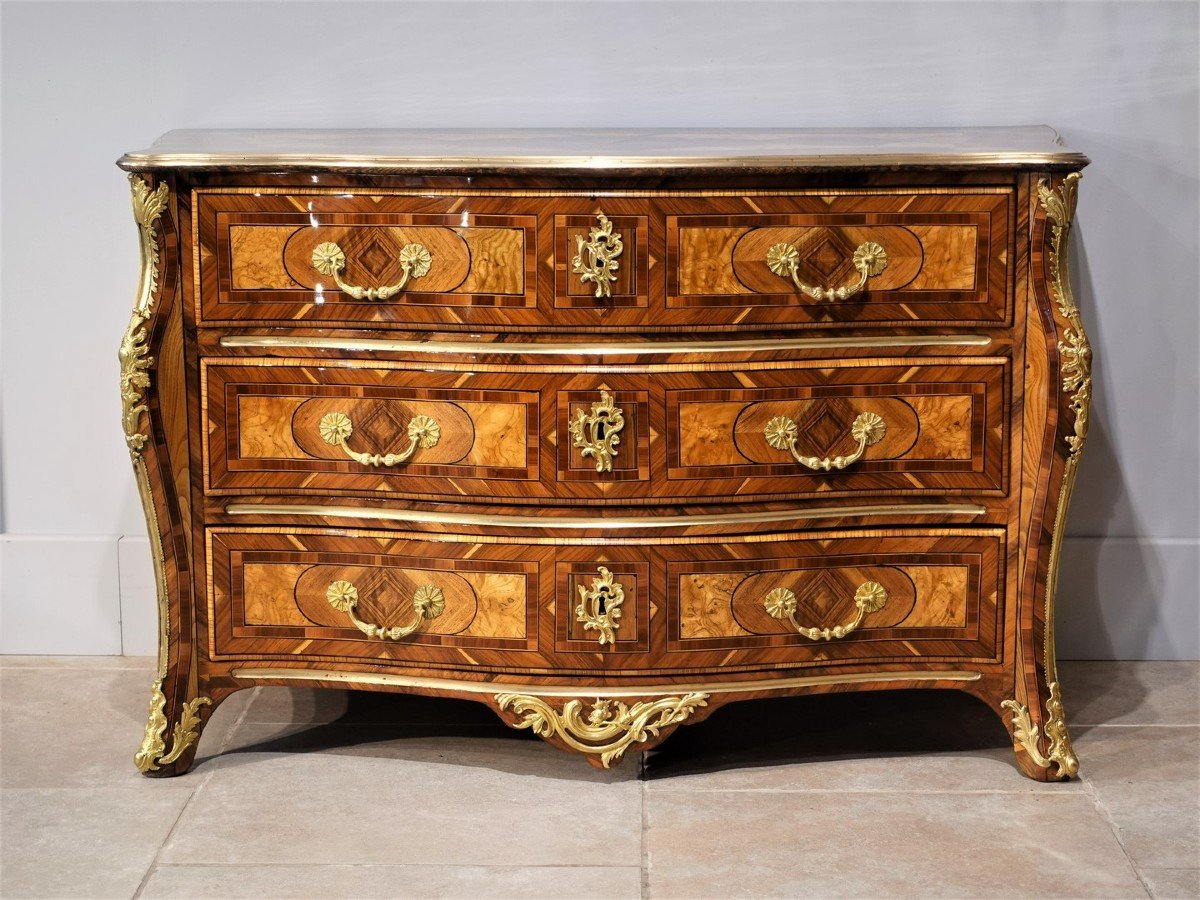
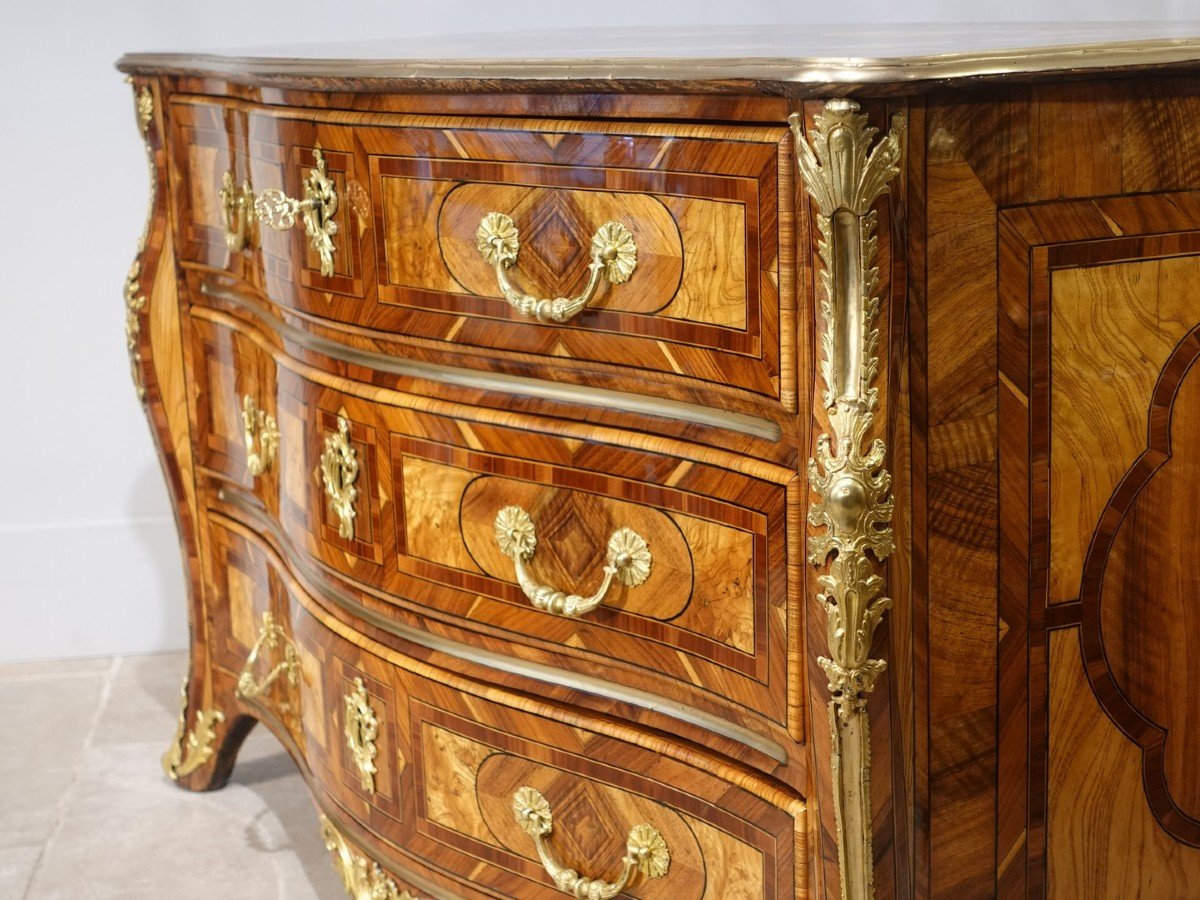
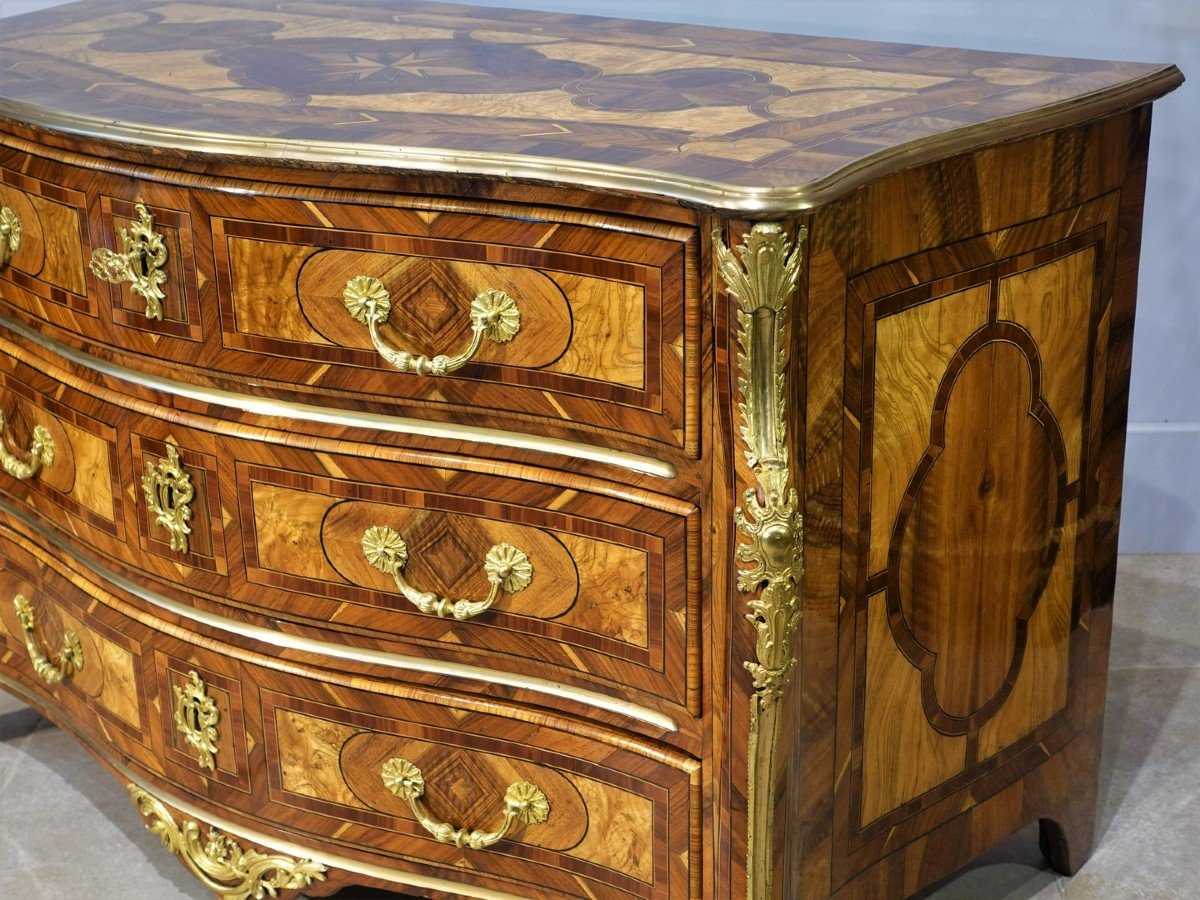
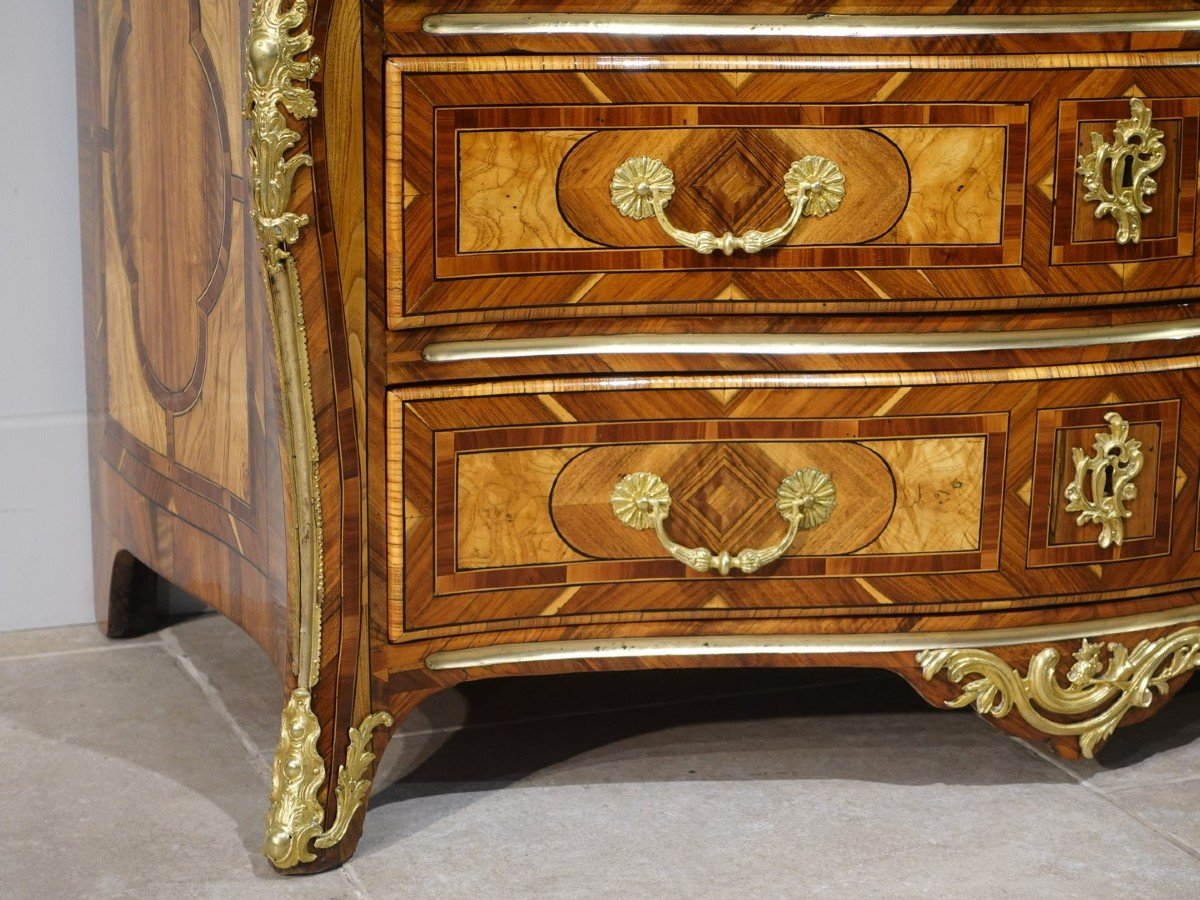

















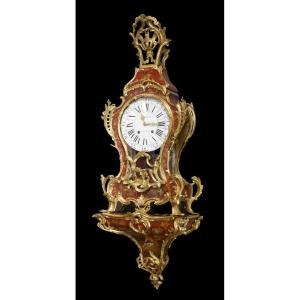
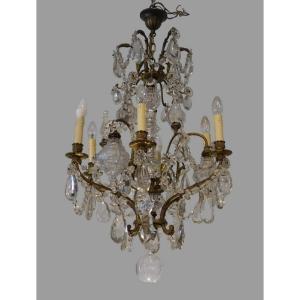

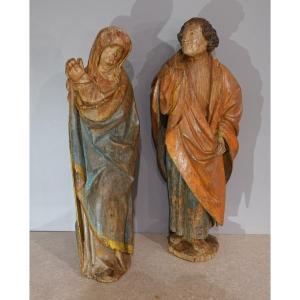


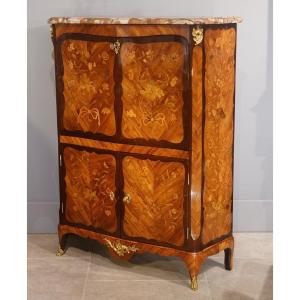
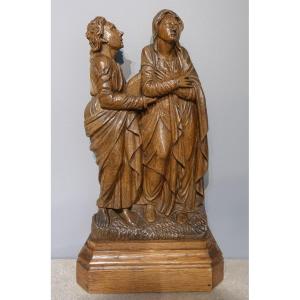




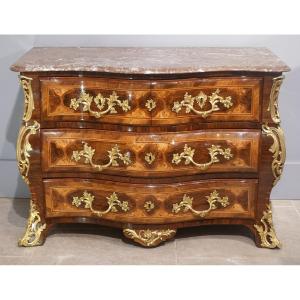
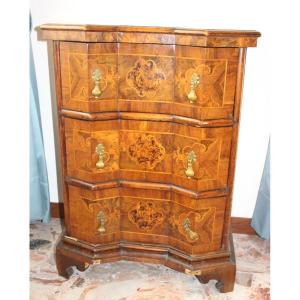
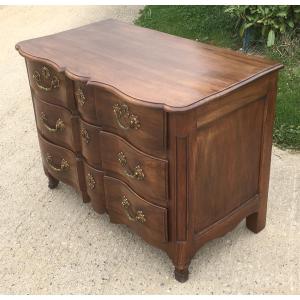






 Le Magazine de PROANTIC
Le Magazine de PROANTIC TRÉSORS Magazine
TRÉSORS Magazine Rivista Artiquariato
Rivista Artiquariato